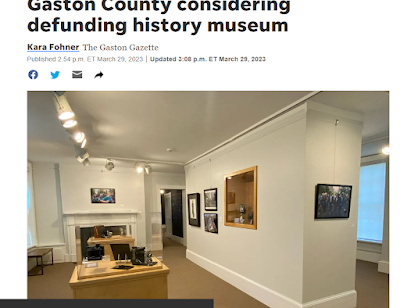Andrew Berg, 12, of Souderton, Pa., views photographs of Muhammad Ali by
Neil Leifer, right, and an anonymous photographer, left, at the James A. Michener Museum in Doylestown, Pa. Two American superstars have crossed paths in suburban Philadelphia at the museum, where a pair of photography exhibits called American Icons offers a peek into the lives of Elvis Presley and Muhammad Ali. AP Photo/Matt Rourke.
Via
artdaily.org
By: Kathy Matheson, Associated Press
DOYLESTOWN, PA (AP).- In a culture saturated with celebrity magazines, paparazzi and red carpets, it's hard to imagine capturing an image of a young Elvis Presley alone on the sidewalk in New York. Or a picture of Muhammad Ali at
play with neighborhood kids in a parking lot.
No screaming fans, no camera flashes, no entourages.
These unguarded moments are among dozens featured in "Ali and Elvis: American Icons," a pair of photography exhibits sharing gallery space through May 15 at the
James A. Michener Museum in Doylestown, Pa., about 25 miles north of Philadelphia. This is the first time the exhibits have been displayed together.
The Smithsonian-curated "Elvis at 21" show offers a glimpse into Presley's life just as his star begins to rise. Needing publicity photos, Presley's record company hired photographer Alfred Wertheimer in 1956 to shadow the rock-n-roll prince who would become The King.
Wertheimer had extraordinary access, said Smithsonian project director Marquette Folley.
"After this year, 1956, no one can ever get this close again," Folley said. "The walls go up."
The images of Ali, taken by multiple photographers, chronicle his years from teen boxer to his reign as The Greatest to a beloved figure battling Parkinson's disease. They were first displayed at a Hofstra University symposium on Ali in 2008.
Putting the exhibits together was simply an effort to take a broader look at the concepts of fame and the making of icons, said Brian Peterson, chief curator at the Michener Museum.
Certainly the two superstars had similarities. Both sons of the South, Presley and Ali enjoyed worldwide popularity but also alarmed some people with their swagger and attitude — Elvis with his thrusting pelvis and use of African-American rhythms in his music, Ali with his braggadocio and conversion to Islam.
Wertheimer's 56 images — most enlarged to 3-by-4-foot prints — capture Presley's electrifying stage persona but also his more intimate moments: standing in solitude in front of New York's Warwick Hotel; sprawling on a couch reading fan mail; and interacting with his family.
Wertheimer also chronicles one summer week that found the American idol rehearsing alone at a piano for an appearance on Steve Allen's show in New York, kissing a giddy fan backstage in Richmond, Va., and splashing in his swimming pool at home in Memphis, Tenn.
"I was basically putting Elvis under my microscope," Wertheimer, now 81, told The Associated Press. "He permitted closeness."
The bulk of "Muhammad Ali: The Making of an Icon" features shots of the heavyweight champ in and around the ring:
training in Miami; absorbing blows from George Foreman in Zaire; and
looming over a floored Sonny Liston in Neil Leifer's famous frame from 1965.
But the exhibit starts with less familiar and more personal images from when Ali was known as Cassius Clay — shadowboxing with his family, preening in front of a mirror and
riding a bike with adoring local children. It ends with pictures of Ali the celebrity and humanitarian, lighting the Olympic torch in Atlanta and receiving the Presidential Medal of Freedom.
Curator Hava Gurevich said the power of the 50-image show lies in its combination of fine art, documentary and news photography.
"It's like a kaleidoscopic view of Muhammad Ali's life," Gurevich said.
Peterson, the Michener curator, said he didn't find out until after booking them that Presley and Ali had actually crossed paths. Elvis visited
Ali's training camp in Pennsylvania's Pocono Mountains and gave him a rhinestone cape; Ali gave The King an autographed pair of gold boxing gloves.
"I can't say it was part of our grand plan," Peterson said. "(But) it made us feel we were kind of on the right track."
The next stop for "Elvis at 21" is the William J. Clinton museum in Little Rock, Ark. The next stop for "Muhammad Ali: The Making of an Icon" is the Historic City Hall Arts & Cultural Center in Lake Charles, La.
Copyright 2011 The Associated Press
















